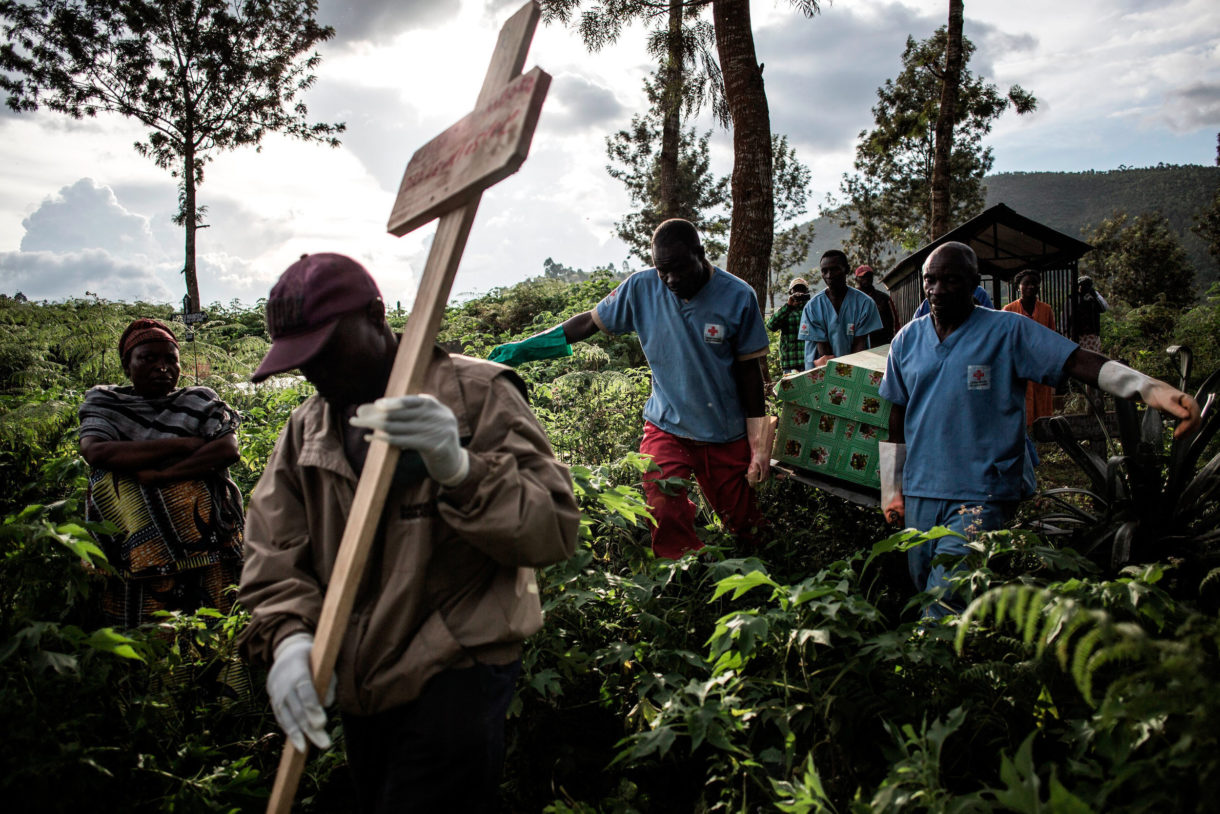“This is not a happy anniversary,” said Yap Boum, the regional representative for Epicentre Africa, the research arm of Médecins sans Frontières (Doctors Without Borders).
On Aug. 1 of 2018, the World Health Organization confirmed four Ebola cases in the conflict-torn east Democratic Republic of Congo. Since then, the outbreak has slowly and steadily worsened. There have now been roughly 2,700 cases and more than 1,800 deaths from the disease, making this the second-largest Ebola outbreak after the 2014-2016 West Africa crisis, which claimed more than 11,000 lives.
And health officials worry that the Congo outbreak is still far from over.
The challenges of containing it have been immense. The virus is spreading in a deeply impoverished part of the country that has been ravaged by various militias since the final days of the Mobutu Sese Seko dictatorship in the mid-1990s.
“It’s happening in a conflict zone,” said Boum, who’s based in Cameroon but has been traveling back and forth to Congo to work on this health crisis. “One of the pillars of Ebola response is community engagement. So if you cannot reach the community then your response is affected.”
According to Matshidiso Moeti, the World Health Organization’s Africa director, there have been 198 attacks on Ebola clinics and response teams over the past year, killing seven Ebola workers and injuring at least 58.
“This violence is a reminder that this outbreak is one with unprecedented challenges,” Moeti said.
Adding to the difficulties, Congo’s health minister resigned last week in a power struggle with the president. And this week a second Ebola case was confirmed in the bustling city of Goma on the border with Rwanda, raising fears of regional spread. That patient died a day after being diagnosed.
Amid all this, the World Health Organization is begging for more money from international donors.
In a call with reporters on Tuesday, Michael Ryan, head of WHO’s Health Emergencies Programme, said that WHO has budgeted $350 million for its response for the rest of 2019.
“We received well short to $50 million to cover that,” he said. WHO is still talking with donors and hopes more contributions will come in soon. He didn’t elaborate on why the shortfall is so large but told the press, “You can characterize that donor response as you will.”
One encouraging sign is the slowing pace of new cases over the past few months. But from a historical perspective, the number is still incredibly high.
In the first seven months of the outbreak, health officials saw roughly 30 new cases each week.
Then, in March, the number started to rapidly increase. In one week in April, there were 126 new cases.
Now the tally has dropped to about 80 new Ebola admissions each week. In any other context, that figure would be considered high. Some outbreaks don’t even get to 80 cases in total.
But there have been some successes. This is the first time that a vaccine has been widely used to combat the spread of the virus.
More than 170,000 people have received that vaccine from Merck. There’s talk of deploying a second vaccine from Johnson & Johnson.
And even though there’s still no licensed drug to treat Ebola itself, there’s a difference between this outbreak and past outbreaks. Several experimental treatments are now available to patients in Congo.
Officials with WHO say that despite the challenges, they’re making progress. Without the vaccine and the deployment of new therapies, the situation would be even worse, they say.
They also point out proudly that when a family, several of whom were sick with Ebola, crossed into Uganda, they were identified quickly. The virus didn’t spread to anyone else in Uganda.
But many public health officials remain anxious.
“I don’t mean to be overly alarmist, but I’m very concerned about the situation,” said Dr. Daniel Bausch, who has worked on Ebola research for more than two decades. Bausch now directs the United Kingdom’s Public Health Rapid Support Team, which has deployed experts to Congo since the early days of this outbreak.
“I think there’s still a risk of this being like the West Africa outbreak,” Bausch said. “Given the limited amount of vaccine that’s available and the really concerning epi curves [rise in cases] we’ve seen over the last few weeks, I think we should be prepared for a long outbreak that will still go on for many months or years.”
9(MDEwNzczMDA2MDEzNTg3ODA1MTAzZjYxNg004))
